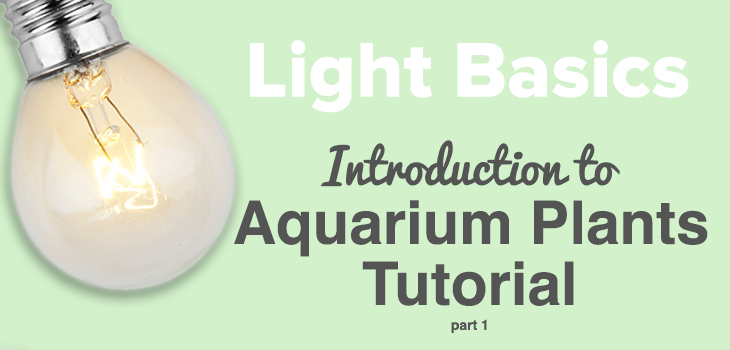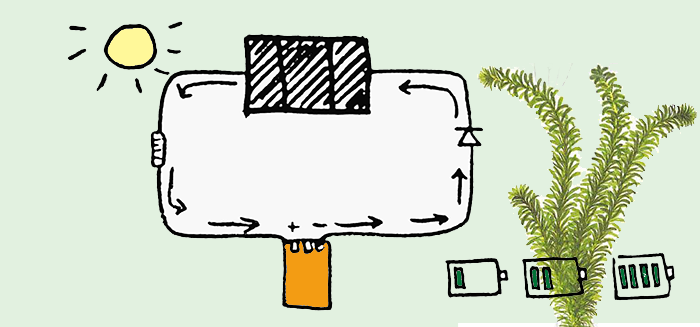Your aquarium plants are melting away right in front of your eyes and you have absolutely no idea why. Or, your beautiful aquarium now looks more like it’s being swallowed whole by green, disgusting algae. Sound familiar??
It does to me! I’ve been there and so has almost every single person who has ever decided to put live plants into a box filled with water a/k/a an aquarium. And if Google doesn’t lie, these are some of the most asked questions related to planted aquariums.
Fear not! I’ve got the solution for you right here! It’s as easy as:
- Lighting – covered in this post
- Carbon dioxide (CO2) – the next post in the tutorial
- Fertilizer – the final post in the tutorial
Sounds complicated but it’s not. YOU’VE got this! I believe in you! Read on to save your plants and your sanity!
Supplemental Podcast:
Also refer to ScapeFu Podcast episode 17 for more on lighting basics.
Aquarium plants need the right amount of light to grow
As some of you may know from dieting, you need the right amount of calories to grow healthy. Too few or too many and you grow poorly and get sick. The amount of light that aquarium plants need is similar to the calories we need to live. We want to give them enough light so that they can grow in a healthy way.
What does light have to do with aquarium plants growing?
Great questions!
Light is energy. This energy powers up a chemical that aquarium plants have in them called chlorophyll. I think of it like rechargeable batteries. Light powers up the plant’s battery a/k/a chlorophyll.
Once light starts to charge chlorophyll, the plant uses it to produce sugar inside of itself. Yes, it’s true! How would you like to produce sugar just by standing in the sun?? Me too!
Once sugar is produced, a complicated process that you don’t really need to know converts it into a chemical called ATP. Yeah, you don’t need to know what that means either. Honestly, all you need to know is that ATP is the fuel used by all living things to grow. So, essentially, the plant converts light energy into chemical energy that it then uses to grow and stay healthy. Get it? Simple, right?
But remember, this process we just talked about (by the way, it’s called photosynthesis) is just like that rechargeable battery. Not enough charge and the battery is very weak and ineffective. Not enough light and the plant can’t make enough ATP and begins to die for lack of food!
If you’re looking for more of a mental challange, the chemical formula for photosynthesis is:
6H2O + 6CO2 ————> C6H12O6 + 6O2
If you don’t speak chemicalese, this translates to: six molecules of water plus six molecules of carbon dioxide produce one molecule of sugar plus six molecules of oxygen. Note the carbon dioxide (CO2) and the oxygen (O2). We will talk more about them later in this tutorial.
OK, OK, so how do we know how much light an aquarium plant needs?
Another great questions! You’re on a roll!
Let’s use that rechargeable battery example again. How do you know when the battery has a full charge?
Well, typically, a light comes on and tells you it’s fully charged, right? The instruction manual will usually also tell you that it will take from X to Y hours for full charge.
I’m your instruction manual for aquarium plants. I can tell you that based on research by very smart, and rather handsome, scientists, most aquarium plants will require from 8–10 hours of light to reach full charge.
How about the equivalent of that little light that comes on when full? Well, we have that too, kinda. When plants reach their full point, you may start to see gas bubbles coming out from the plants. We call this pearling. This is your sign that the plants have reached full capacity.
Also, observing your plants over time is key. If they’re growing well, you are doing well. Simple, eh?
But how do I know what type of light aquarium plants need?
True, true. We’ve talked about the length of time that light should shine on an aquarium plant. We haven’t talked about the practical side of what light should be shining.
I mean, we could be talking the actual sun, flourescent bulbs, metal halides, power compacts, LEDs and even those tiny, artsy bulbs sold at Ikea. Which one to choose?!
Well, it’s all about intensity of the light energy the fixture produces. I don’t mean what looks to you as the intesity of light. I mean the actual amount of light energy (a/k/a radiation) the light bulb puts on the leaf of your aquarium plants.
Let’s use the rechargeable battery again as an example to understand this better.
Imagine that my battery charger is a little 99 cent, supermarket special that is weak and a little embarrasing. It doesn’t generate much power. So, when I use it, it is going to take it a really long time to charge my battery.
Now, imagine that instead, I, being a DIY and engineering god, daisy-chained 10 of those little suckers together so that I had 10 times the power charging my battery. Barring any electrical disasters, my battery would charge 10 times faster. Correct?
OK so, let’s apply this to our light.
If I have a weak bulb that puts out very little light energy on the leaf of my aquarium plant, then it’s going to take a long time for the plant’s battery to charge. As a result, I will need to leave this light on for a longer time than the recommended 8–10 hours. Get it?
Conversely, if I have a bulb that puts a lot of light energy on the plant’s leaf, the plant’s battery is going to charge much quicker. It may reach full charge much sooner than the recommended 8–10 hours. Make sense?
So, ideally, you would do a little research on your light source (and, no, I don’t recommend that you use the sun). Find out how much light energy it puts out at about the distance where your aquarium plants will be. You can find this by searching for the fixture’s photosynthetically active radiation (PAR) number at certain distances from the fixture. PAR is simply the light energy we want.
In other words, how high is the light fixture from your aquarium plants. Then find the amount of PAR the light fixture puts out at that distance.
Two things:
- A starting point for you is:
High Light Plants: 50+ PAR
Medium Light Plants: 30–40 PAR
Low Light Plants: 20–30 PAR - If you can’t find a PAR for your light fixture, don’t resort to using the antiquated formula of watts per gallon. Instead, either ask me (Art), ask in the ScapeFu Community or go trial and error by observing your plants.
Wait a minute! It seems to me I can increase or decrease how fast my plants grow by throttling the amount of light, no?
Bingo! Now you’re getting it!
It’s not the only thing that would dictate how fast or slow your plants grow and some plants respond better than others. However, light is one of the most influential things that dictates plant growth.
The other things that you will have to balance are supply of CO2 (I told you it would come up again!) and other plant nutrients. It’s the golden equation of light, CO2 and fertilizer!
Think of it this way. Increasing one means that the other two must also increase to maintain a balance between the three. And, maintaining a balance, consistently is the secret sauce for keeping your plants healthy and you happy.
I get it! Does it matter the type of light I’m using and it’s color?
No, not really. As long as the light provides light that is usable for photosynthesis, it’s fine. It’s that PAR thing again.
If you want the scientist’s opinion, let’s bring in Dr. Cryptocoryne.
Dr. Crypt, can you explain to us the light that is usable by our aquarium plants?
Why, of course! I would love to!
Plant chlorophyll absorbs light at wavelengths of 400 to 700 nm. This is termed Photosynthetically Active Radiation. The intensity of full, natural sunlight is approximately 2,000 umoles/m2/s, or 100 klux, of PAR. Light is attenuated rapidly in freshwater, however, so that submerged aquatic plants receive far less than this amount.
Submerged aquatic plants are adapted to the low light levels found in freshwater, and are classified as shade plants on the basis of these adaptations. For instance, aquatic plant chloroplasts, which are the organelles that contain chlorophyll, are often located in the top cell layer of leaves to ensure that as much light as possible is absorbed. Additionally, photosynthesis is saturated at only 15 to 50% full sunlight intensity. Aquatic plants also have a low light compensation point. The LCP is the point at which the rate of photosynthesis equals the rate of respiration and growth stops. This allows them to grow to depths that receive only 1 to 4% full sunlight (20 to 80 umoles/m2/s PAR)…
OK OK, eh hem. Thank you, Dr. Cryptocoryne. (Gees) By the way, Dr. Crypt is a quote from Dave Hubert who was/is my hero for what he’s written on aquatic plants.
So, if I understood Dr. Crypt, we want a light fixture that puts out light within the range of 400 to 700 nanometers.
You might be asking, “What the *$#% are nanometers?”
Don’t worry about it for now. Just know that almost every fixture you can buy will put out light somewhere in this spectrum. So, flourescent, metal halide, mercury vapor, LED, power compact flourescent fixtures will be OK.
Just make sure:
- It looks good to you; and
- It puts out enough PAR.
Your homework. Actually, you need to do it right now…
If you’ve read this far, you either have a light fixture already or are wondering which one to buy. Either way, your mission is to do just a little bit of research on the light fixture you have or are contemplating buying. If you’re in the market for a light fixture, I can recommend a few that I like.
Find out how much PAR the fixture puts out and how many watts it uses.
Now! Read carefully. This is important!
Buy the fixture that:
- You can afford;
- That has the highest PAR (if adjustable) or correct PAR for your plants (if not adjustable);
- Puts out a color you find nice to look at; and
- Uses the fewest watts of electricity.
That’s it. I told you it was simple!
Now you have a good understanding of the first part of the golden equation – Light. To continue to learn about light and what you need to know for your planted aquarium, go reach Light Basics Introduction to Aquarium Plants Tutorial Part 2.
You’re not done, my young Padawan! You can’t just go fight the Sith (a/k/a melting plants and algae) now! You’re not ready!
You need to learn the remaining two parts of the golden equation. Continue learning with the next part of the tutorial – We need oxygen, plants need CO2 and the last part – Your plants need food too!
But WAIT! Don’t leave just yet. What questions do you have about lighting that we didn’t cover yet??
Let me hear from you in the comments below.
Housekeeping
- The ScapeFu App is now available for iOS and Android. Please go download it and help us defray the cost of running ScapeFu. Here’s what you get:
- Convenience of automatically getting each episode of ScapeFu as it comes out;
- Access to our entire library of past episodes;
- The Ask Art Podcast which is app-only; and
- I’m told your good karma will result in fewer red lights as you drive your car.
- The ScapeFu Tribe Community Forum is now live. It’s our very own growing community where we can discuss episodes of the ScapeFu podcast and anything else you’d like. Go check it out!
Podcast: Play in new window | Download (34.4MB)
Subscribe: iTunes | Android | RSS




5 Comments on “Light Basics – Introduction to Aquarium Plants Tutorial”
Pingback: Light Basics | ScapeFu043 - ScapeFu
That’s the best explanation for lighting I have ever read. I’m setting up a fish room and at least one of my tanks will be planted. Probably more of them will be planted now that I have this information. I’ve had several planted tanks in the past and even had short term success, the plants eventually melt. Without understanding what is going on you really have no idea how to fix it. Looking forward to the other parts of the formula for success. Thanks
Hey Don,
Thanks for your kind words. There is so much information on lighting out there that just confuses everybody. I tried to make it easy to understand.
The rest of the tutorial will be coming out over the next month. In the meantime, I’m here to help. Send me an email or join the Community.
Best,
Art
Pingback: Light Basics Continued - Introduction to Aquarium Plants Tutorial Part 2 - ScapeFu
Pingback: Black Brush Algae (BBA) - How to Kill it | ScapeFu047 - ScapeFu